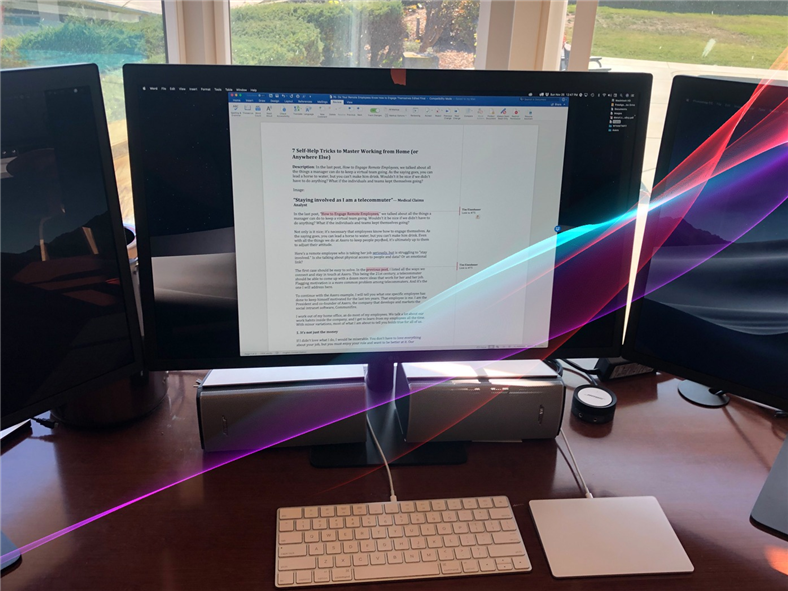Getting employees to report near misses.
— Safety Manager
We all have “hits,” the business or personal wins we brag about, put on our resumes, post on social media, and milk for acknowledgment in any way we can.
We also have “misses.” We file them away under “learning experiences” and don’t talk about them unless we have to. Now and then, when we feel good about ourselves, we will bring them up—to get even more pride out of our hits and to show that we are humble.
We also have “near misses.” A near miss is a strange animal. It doesn’t carry enough pride to earn us bragging points. Nor does it come with enough shame to make a permanent mark in our memory. Apart from a few special cases, like a near-death experience, we like to forget our near misses as soon as we can.
And that’s a shame because near misses are a gold mine of low-cost learning experiences. If we could only capture their true significance, break it down into do’s and don’ts, categorize, index, and file them for future reference, we could vastly improve our “hit” ratios for years to come.
The Safety Manager who left today’s comment was talking about workplace accidents, but we can apply the same logic to any part of the business. Nearly missed sales targets. Nearly missed quarterly earnings. Nearly missed deals, contracts, labor agreements, and so on.
When we are about to miss an important goal, we shift into crisis mode and do things we normally wouldn’t. Sometimes this helps us avert the crisis even though its root causes are still present and need to be addressed.
We should never brush off a near miss because it didn’t kill us. Rather, we should see to it that it makes us stronger. The reason to analyze and understand every near miss becomes clear when we look back at any prominent failure. Here’s one:
How many quarters of nearly missed earnings did it take Enron to go bankrupt in December 2001?
On November 8, 2001, the company restated its profits for the previous five years. The next day, The New York Times reported:
“In a sweeping restatement of its profits, Enron said that its actual net income for the years 1997 to 2000 was $591 million less than it had reported on its financial statements. In a filing with the S.E.C., Enron also indicated that part of last year’s reported profits came from transactions with partnerships controlled by Andrew S. Fastow, who was the company’s chief financial officer until he was ousted October 24.
Enron said the transactions involving Mr. Fastow, which are part of the S.E.C. investigation, earned the former executive more than $30 million. The company also said it had fired its treasurer and the general counsel of one of its divisions, who both had invested in one of the partnerships.” (Enron Admits to Overstating Profits by About $600 Million by Richard A. Oppel Jr. and Andrew Ross Sorkin, The New York Times, November. 9, 2001)
From January 1997 through October 2001, Enron’s chief financial wizards, President and COO Jeffrey Skilling and CFO Andrew Fastow cooked the books to meet and exceed Wall Street expectations. That’s nineteen consecutive quarters of near misses! Each one taking the company closer to the brink of disaster.
In August 2000, the stock hit an all-time high of $90.56, and for another year, few Enron executives were willing to see the company for what it was: a failing business pulling out all stops to pass itself off as a successful one. In the meantime, public scrutiny intensified, leading to one close call after another.
In March 2001, Fortune published an article entitled, “Is Enron Overpriced?” The author, Bethany McLean, argued that investors and analysts did not understand how Enron made money. Then CEO Jeffrey Skilling responded by calling her “unethical.” During a conference call with analysts in April 2001, Skilling personally attacked an analyst for questioning Enron’s numbers, saying, “Well, thank you very much, we appreciate that … asshole.”
Then, in August 2001, Skilling abruptly resigned. The company finally recorded a loss, and the stock plunged into a downward spiral from which it never recovered. In December 2001, it fell to twenty-six cents a share, forcing the company to liquidate assets to pay the creditors.
Only a few months earlier, analysts still rated Enron stock “a strong buy.” When bankruptcy hit, Wall Street marveled at the company’s “overnight collapse.” But the real surprise was not how quickly Enron fell. It was how long everyone ignored its near misses.
Unless taken seriously, near misses always lead to a real crash. This is how expert stock traders know when to cash in their gains. They watch for the stock to nearly miss its previous high. They may define a near miss in terms of the stock price or trading volume. What they are looking for are early signs that the market demand for the stock at that price has been filled. At that point, the traders will attempt to liquidate their positions before the real selloff begins.
We may not spot a stock’s near miss as well as a professional trader who has seen hundreds of thousands of stock charts in his lifetime. However, we all know what a near miss looks like in our areas of expertise. So, why don’t we pay closer attention?
I believe the main reason is that we don’t want to admit to ourselves that we’re doing something wrong. Perhaps using a flawed business model. Or short-cutting a safety rule. Instead of facing the problem, we use the convenient excuse that nothing bad has happened—yet—and by doing so, make sure that it will eventually.
Therefore, maybe a short training session could help our Safety Manager to get his coworkers to treat near misses like real accidents—and report them. The goal of the training would be to impress upon employees two simple ideas:
(a) Near misses are serious wake-up calls. Do not hit the snooze button!
(b) Pay a visit to our old friend, intellectual humility.
He could start by training the managers to share their mistakes and near misses with the teams. There’s nothing like a personal example to convince employees that making a mistake is okay, but hiding and denying it is a terrible idea.
This is more or less the message that Andrew Fastow is trying to spread these days. Now that he is out of prison, he is a frequent guest speaker with business ethics and fraud prevention crowds. In his own words “the most egregious reason” he is guilty is that his work “intentionally created a false appearance of what Enron was—it made Enron look healthy when it really wasn’t.” (The Confessions of Andy Fastow by Peter Elkind, Fortune, July 1, 2013)
He does not get paid to talk. His purpose is “to help [people] understand why I did the things I did, how I went down that path, and how they might think about things so they also don’t make the mistakes I made.”
He insists that the lessons of Enron have not been learned:
“… The things that Enron did, and that I did, are being done today, and in many cases they’re being done in such a manner that makes me blush—and I was the CFO of Enron.”
If this doesn’t motivate people to come clean about bending the rules and nearly missing major accidents, I don’t know what will.
___
If you like hitting your goals and missing your accidents, you might like my book, because it helps you learn from the best and the worst.














